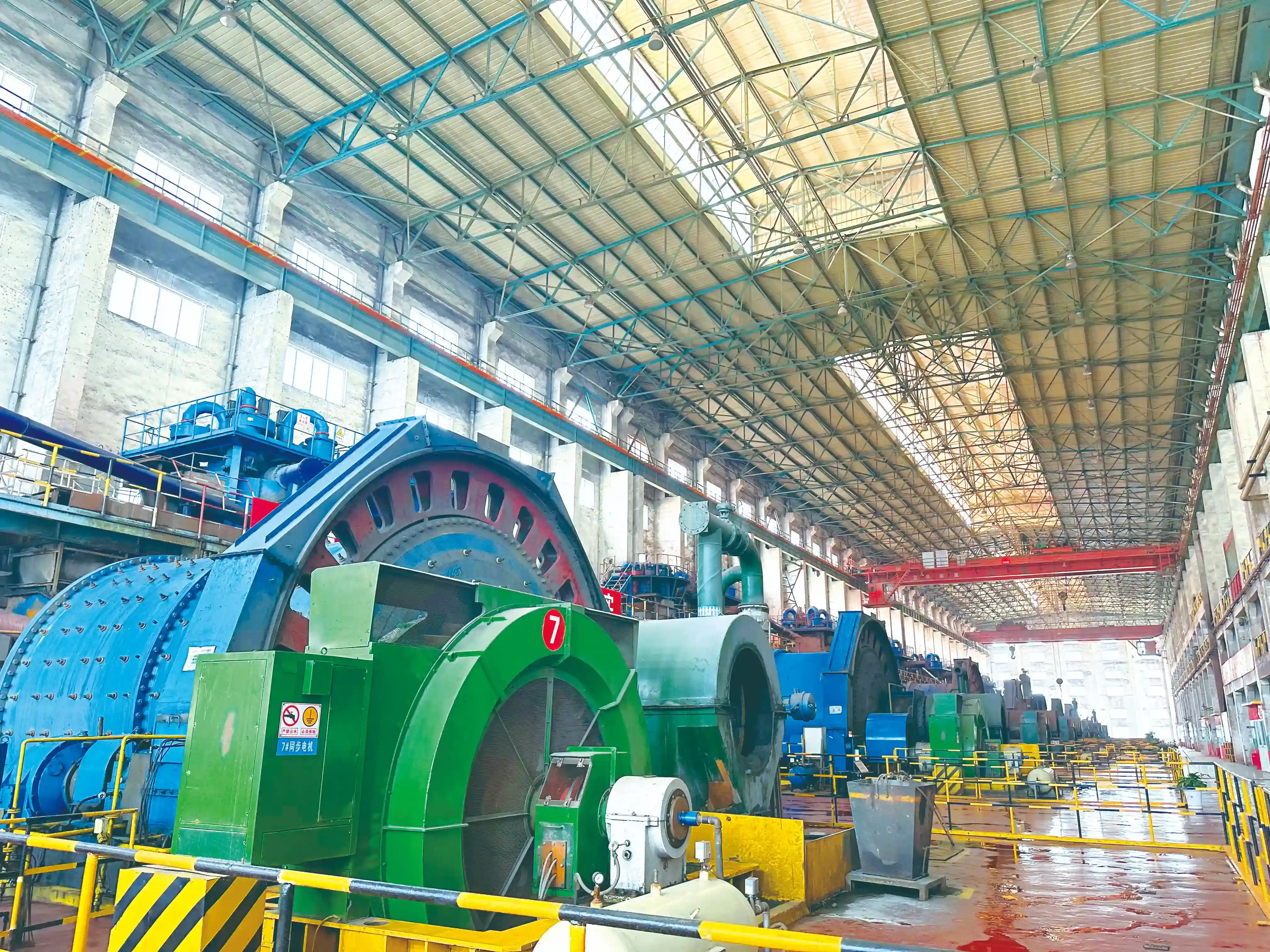Optimal ball size distribution to minimize wear rates
One of the most effective ways to reduce grinding balls mining consumption is by optimizing the ball size distribution within the mill. A well-balanced mix of ball sizes can dramatically improve grinding efficiency while minimizing wear rates.
The importance of ball size selection
Selecting the right ball sizes is critical for efficient grinding. Larger balls provide more impact energy, ideal for breaking down coarser particles. Smaller balls, on the other hand, offer increased surface area for fine grinding. By carefully balancing the distribution of ball sizes, mills can achieve optimal grinding performance while reducing overall ball consumption.
Implementing a top-up strategy
A strategic top-up approach can help maintain an ideal ball size distribution over time. This method involves regularly adding new balls to replace those that have worn down, ensuring a consistent grinding performance. By monitoring the ball size distribution and implementing a well-planned top-up strategy, mining operations can significantly extend the life of their grinding media.
Mill liner-grinding ball interaction effects on consumption
The interaction between mill liners and grinding balls mining can have a substantial impact on ball consumption rates. Optimizing this interaction can lead to reduced wear and improved grinding efficiency.
Liner design considerations
The design of mill liners plays a crucial role in how grinding balls move within the mill. Wave-type liners, for example, can promote a more efficient lifting action, reducing ball-on-ball impacts and minimizing wear. Additionally, the material composition of the liners can affect their durability and their interaction with the grinding media.
Balancing lift and impact
Finding the right balance between ball lift and impact is essential for reducing consumption. Too much lift can lead to excessive ball-on-ball collisions, increasing wear rates. Conversely, insufficient lift may result in inefficient grinding. By fine-tuning the liner design and mill operating parameters, operators can achieve an optimal balance that maximizes grinding efficiency while minimizing ball wear.
How slurry chemistry affects grinding media corrosion?
The chemical composition of the slurry in which the grinding balls mining operate can significantly influence their corrosion rates and overall consumption.
pH control and its impact
Maintaining an optimal pH level in the grinding circuit is crucial for minimizing corrosion of grinding media. Generally, a slightly alkaline environment (pH 7.5-10) can help reduce corrosion rates. However, the ideal pH range may vary depending on the specific ore type and grinding ball composition. Regular monitoring and adjustment of slurry pH can lead to substantial reductions in ball consumption.
Dissolved oxygen and its effects
The presence of dissolved oxygen in the slurry can accelerate corrosion rates of grinding media. Implementing strategies to reduce dissolved oxygen levels, such as using nitrogen purging or oxygen scavengers, can significantly extend the life of grinding balls. This is particularly important in circuits processing sulfide ores, where oxidation reactions can be particularly aggressive.
Corrosion inhibitors and protective coatings
The use of corrosion inhibitors or protective coatings on it can provide an additional layer of defense against chemical attack. These treatments can form a protective barrier on the ball surface, reducing direct contact with corrosive elements in the slurry. While the initial cost may be higher, the extended lifespan of treated balls can result in significant long-term savings.
Monitoring and control of slurry density
Slurry density plays a crucial role in grinding efficiency and ball wear rates. Maintaining an optimal slurry density ensures proper suspension of the grinding media and ore particles, reducing unnecessary ball-on-ball contacts and minimizing wear. Regular monitoring and adjustment of slurry density can lead to more consistent grinding performance and reduced ball consumption.
The role of water quality
The quality of water used in the grinding circuit can have a surprising impact on ball consumption. Water with high levels of dissolved salts or impurities can accelerate corrosion and affect the overall grinding efficiency. Implementing water treatment systems or using recycled process water with controlled chemistry can help mitigate these issues and extend the life of grinding media.
Adaptive control systems for optimized performance
Implementing advanced control systems that can adapt to changing ore characteristics and operating conditions can significantly improve grinding efficiency and reduce ball consumption. These systems can continuously optimize mill operating parameters, such as rotational speed, ball charge, and slurry density, based on real-time data. By maintaining optimal grinding conditions, these adaptive control systems can minimize unnecessary wear on it while maximizing throughput.
Regular monitoring and predictive maintenance
Establishing a robust monitoring and maintenance program is essential for minimizing grinding ball consumption. Regular inspections of mill internals, including liners and grinding media, can help identify wear patterns and potential issues before they lead to significant losses. Implementing predictive maintenance techniques, such as vibration analysis or power draw monitoring, can provide valuable insights into mill performance and help optimize ball charge and replacement schedules.
Exploring alternative grinding technologies
While conventional ball mills remain widely used, exploring alternative grinding technologies may offer opportunities for reduced media consumption. High-pressure grinding rolls (HPGR) or stirred media mills, for example, can achieve similar size reduction with potentially lower grinding media consumption in certain applications. Evaluating these technologies for specific ore types and processing requirements may reveal opportunities for significant reductions in overall grinding costs.
In conclusion, reducing grinding ball consumption requires a multifaceted approach that considers ball size distribution, mill liner interactions, and slurry chemistry. By optimizing these factors and implementing advanced monitoring and control strategies, mining operations can significantly reduce their grinding media costs while maintaining or even improving their grinding efficiency. As the industry continues to evolve, staying informed about the latest advancements in grinding technology and media materials will be crucial for maintaining a competitive edge in mineral processing operations.
If you're looking to optimize your grinding balls mining consumption, don't hesitate to reach out to our team of experts at NINGHU. We specialize in high-quality grinding media solutions tailored to your specific needs. Contact us today at sales@da-yang.com or sunny@da-yang.com to learn how we can help improve your grinding efficiency and reduce operational costs.
References
- Johnson, S. R., & Smith, A. T. (2022). Advanced Strategies for Reducing Grinding Media Consumption in Mineral Processing. Journal of Mining Engineering, 45(3), 215-230.
- Zhang, L., & Wang, H. (2021). The Impact of Slurry Chemistry on Grinding Ball Wear Rates in Copper Ore Processing. Minerals Engineering, 158, 106610.
- Rodriguez, M., & Chen, Y. (2023). Optimizing Ball Size Distribution for Improved Grinding Efficiency and Reduced Media Wear. International Journal of Mineral Processing, 180, 107553.
- Patel, K., & Nguyen, T. (2022). The Role of Mill Liner Design in Minimizing Grinding Ball Consumption. Powder Technology, 402, 117311.
- Lee, J., & Kim, S. (2021). Adaptive Control Systems for Optimized Grinding Performance and Media Wear Reduction. Minerals, 11(7), 751.
- Thompson, R., & Garcia, E. (2023). Comparative Analysis of Conventional and Alternative Grinding Technologies for Reduced Media Consumption. Mining, Metallurgy & Exploration, 40(2), 821-835.









